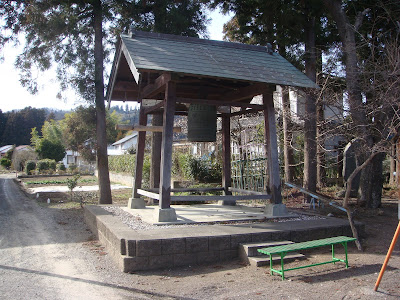During the week we had decided that on Sunday we would go to Temples #4 and #5. However, at about 5:30 Sunday morning I got a phone call from Ian saying that it was very windy, so windy that the trains might not be running. After a short discussion, we decided to meet at Sendai Station and then decide what to do. As a last resort we could always walk around in the city. I had suggested that we meet at a bakery that makes delicious sandwiches so I went to the station and waited in front of the bakery. Ian did not arrive but I got a telephone call from his son Roy, who said that Ian was waiting for me and where was I? I waited a bit longer and then went to the wickets at the main entrance to the station and found Ian standing there. He had thought that I meant a convenience store just inside, so he thought that I was late. When I led him to the bakery, it turned out that he had never seen it.
The other problem was that the trains were not running because of the wind. In the picture you can see the black band on each side of the clock. That normally contains listings of all the trains, but as you can see it is essentially empty. We wanted to go south but there were no trains. However, some of the trains going north were running. We decided to go north and visit Temples #6 and #7. Then next train was not for about 40 minutes so we went to the bakery and had coffee and pastry, and bought sandwiches for lunch.
 The temples are in a tourist area and Temple #6, Zuiganji, is a favorite spot for one day trips from Sendai. From the main road the entrance to the temple is not very impressive, just a narrow road with food and souvenir shops.
The temples are in a tourist area and Temple #6, Zuiganji, is a favorite spot for one day trips from Sendai. From the main road the entrance to the temple is not very impressive, just a narrow road with food and souvenir shops. When we arrived at the actual entrance, we discovered that there was a 700 yen entrance fee. We also discovered that they are in the middle of a huge reconstruction project so most of the buildings are covered with protective sheeting. Next to the ticket booth was a room where a monk stamped the books, so we just asked him to do it and did not enter the temple area.
When we arrived at the actual entrance, we discovered that there was a 700 yen entrance fee. We also discovered that they are in the middle of a huge reconstruction project so most of the buildings are covered with protective sheeting. Next to the ticket booth was a room where a monk stamped the books, so we just asked him to do it and did not enter the temple area.Actually the temple grounds, outside the area where you have to pay, are quite extensive, so we walked through some of the paths. One of the features are man-made caves in which the monks lived and meditated before the buildings were erected. This picture shows a large cave at the bottom behind the stele and four smaller ones in the side of the hill.
 This is a slightly different view of the same place, but now you can see the new meditation hall that they have built at the top of the hill. The caves are no longer in use. The stelae have quotations from various Buddhists carved into them.
This is a slightly different view of the same place, but now you can see the new meditation hall that they have built at the top of the hill. The caves are no longer in use. The stelae have quotations from various Buddhists carved into them.
















































